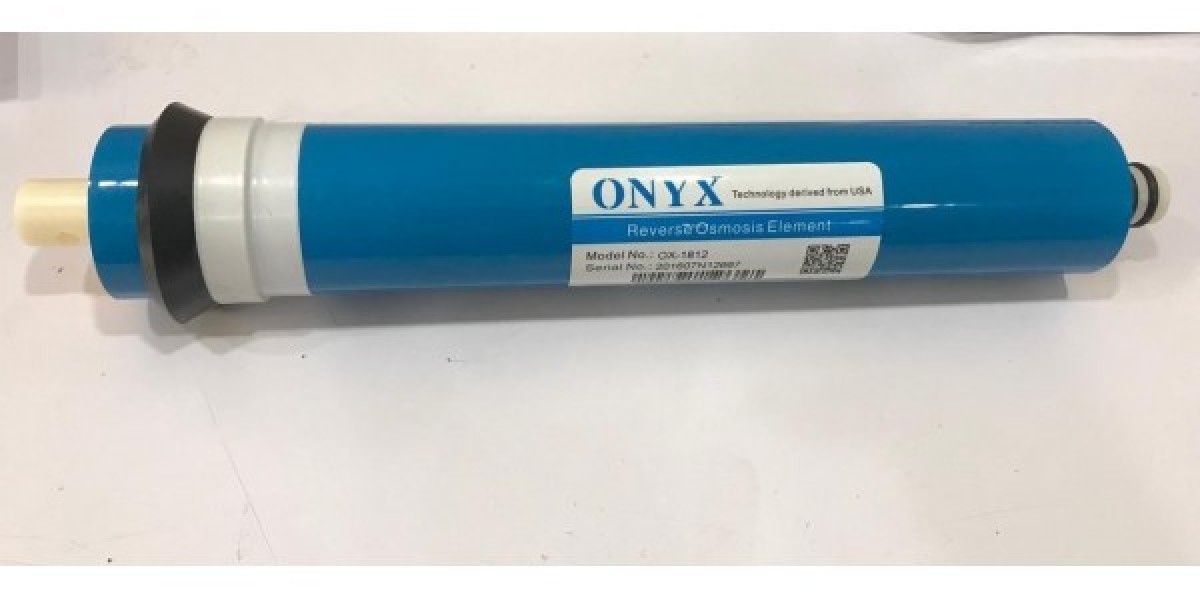In today’s world, where water contamination levels are rising due to pollution, industrial waste, and agricultural runoff, access to clean, safe drinking water is increasingly becoming a significant concern. Water purification systems, especially reverse osmosis (RO) technology, have become indispensable in ensuring that water is free from harmful contaminants. At the heart of any RO system lies the reverse osmosis membrane – the most critical component responsible for removing impurities and ensuring water quality. The importance of a high-quality RO membrane cannot be overstated, as it plays a pivotal role in determining the efficiency, performance, and lifespan of the water filtration system.
Understanding Reverse Osmosis and the Role of the RO Membrane
Reverse osmosis is a water purification technology that uses a semi-permeable membrane to remove ions, molecules, and larger particles from drinking water. The process works by applying pressure to water on one side of the membrane, forcing it through the tiny pores of the membrane. This semi-permeable membrane allows only water molecules to pass through while rejecting contaminants such as salts, bacteria, viruses, heavy metals, and other pollutants.
The reverse osmosis membrane is engineered to allow the flow of pure water while blocking a wide range of impurities. Its efficiency in this process is measured by its ability to reject contaminants and the amount of water it purifies within a given time. A high-quality RO membrane ensures that the water passing through it is as clean and safe as possible, making it an essential element of any water filtration system.
Key Benefits of a High-Quality RO Membrane
1. Superior Contaminant Removal
The primary purpose of an RO membrane is to remove contaminants from water. A high-quality membrane is capable of filtering out a wide array of harmful substances, including:
- Dissolved salts and minerals: Excessive amounts of dissolved salts and minerals, such as calcium and magnesium, can make water hard and unsuitable for drinking or use in household appliances. High-quality RO membranes can reduce the concentration of these salts, resulting in softer, more palatable water.
- Heavy metals: Contaminants like lead, mercury, arsenic, and chromium are harmful even at low levels. A premium RO membrane can effectively remove these heavy metals, ensuring the water is safe for consumption.
- Microorganisms: Bacteria, viruses, and protozoa are common contaminants in untreated water sources. High-quality membranes are designed to block these harmful microorganisms, reducing the risk of waterborne diseases.
- Chemicals and toxins: Pesticides, herbicides, and industrial chemicals are often present in surface and groundwater. An efficient RO membrane can filter out these harmful compounds, providing water that is safe for drinking and cooking.
The effectiveness of an RO system is directly tied to the quality of the membrane it uses. Cheaper, low-quality membranes may allow some contaminants to pass through, which can compromise the safety and taste of the water.
2. Improved Water Taste and Odor
Water that is contaminated with impurities often has an unpleasant taste or odor. A high-quality RO membrane not only removes harmful substances but also improves the aesthetic properties of water. It filters out dissolved gases and organic compounds that may cause bad taste and odor. By providing clean, fresh-tasting water, a top-tier membrane enhances the overall drinking experience and encourages the consumption of more water, which is essential for good health.
3. Energy Efficiency and Cost-Effectiveness
While the upfront cost of a high-quality RO membrane may be higher than that of a lower-quality alternative, it proves to be more cost-effective in the long run. Premium membranes typically have a longer lifespan, meaning they need to be replaced less frequently. Additionally, high-quality membranes are more efficient at filtering water, requiring less energy to achieve the same level of purification. This energy efficiency translates into lower operational costs, making high-quality RO membranes a more economical choice over time.
4. Durability and Longevity
A high-quality RO membrane is designed to withstand the rigors of daily use. It is made from durable materials that resist fouling, scaling, and degradation over time. Fouling occurs when particles, microorganisms, or dissolved substances accumulate on the surface of the membrane, reducing its efficiency. A premium membrane is engineered to resist such fouling, ensuring consistent performance and a longer operational lifespan. This durability means that the membrane will not need to be replaced as frequently, saving on maintenance costs and downtime.
5. Environmental Benefits
High-quality RO membranes contribute to environmental sustainability in several ways. First, they are more efficient at water purification, reducing the amount of water wasted during the filtration process. Lower-quality membranes may require higher levels of water to achieve the same level of purification, leading to more water waste. Additionally, by providing a reliable source of clean drinking water, RO systems with premium membranes reduce the need for bottled water, which in turn reduces plastic waste and the environmental impact associated with the production, transportation, and disposal of bottled water.
Factors Affecting the Performance of an RO Membrane
The performance of an RO membrane can be influenced by several factors, all of which should be considered when selecting a high-quality membrane:
1. Membrane Material
RO membranes are typically made from either cellulose acetate or thin-film composite (TFC) materials. Thin-film composite membranes are widely regarded as the superior option due to their higher rejection rates for contaminants and their resistance to biological degradation. A high-quality TFC membrane provides excellent performance and longevity, making it the preferred choice for most modern RO systems.
2. Operating Pressure
The effectiveness of an RO membrane is influenced by the pressure applied during the filtration process. Higher-quality membranes are designed to operate efficiently at a wide range of pressures, ensuring optimal performance even in low-pressure environments. A membrane that requires high pressure to function effectively may increase energy consumption and operational costs, while a more efficient membrane will purify water with less energy input.
3. Membrane Pore Size
The pore size of the membrane is critical to its performance. A high-quality RO membrane will have uniform and appropriately sized pores that allow only water molecules to pass through while blocking contaminants. If the pores are too large, the membrane will not filter out all impurities; if they are too small, water flow may be reduced, leading to inefficiency.
4. Maintenance and Cleaning
Regular maintenance is essential to keep any RO system functioning optimally, but a high-quality membrane will require less frequent cleaning and replacement due to its superior resistance to fouling and scaling. Nonetheless, routine cleaning and maintenance help extend the lifespan of the membrane and ensure consistent water quality.
Conclusion
The RO membrane is the core of any reverse osmosis water filtration system, and its quality directly impacts the effectiveness, efficiency, and durability of the system. A high-quality RO membrane ensures superior contaminant removal, improves water taste and odor, offers energy efficiency, and lasts longer, making it a wise investment for both residential and commercial water purification needs. With increasing concerns over water quality and safety, investing in a top-tier RO membrane is essential for ensuring access to clean, safe, and healthy drinking water. By choosing a high-quality RO membrane, individuals and organizations can enjoy the benefits of pure water while reducing operational costs, environmental impact, and health risks associated with contaminated water.









